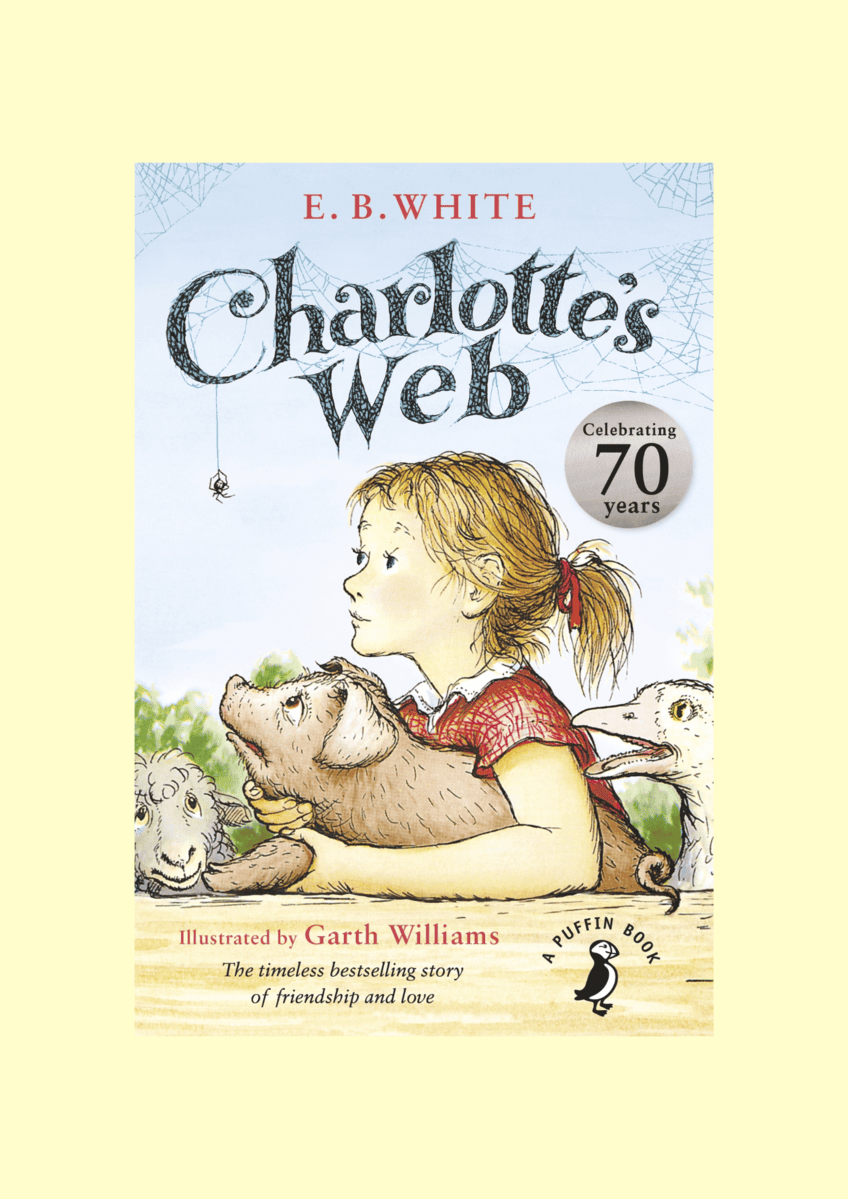Review of Charlotte’s Web – A Timeless Story of Friendship and Sacrifice
1. Introduction to the Author: E. B. White
E. B. White (Elwyn Brooks White) was one of the most renowned American writers of the 20th century, particularly known for his children’s books. Born in 1899 and passing away in 1985, White left behind literary classics such as Stuart Little (1945), Charlotte’s Web (1952), and The Trumpet of the Swan (1970). In addition to writing children’s books, he was a prominent journalist and essayist, contributing to The New Yorker for several decades.
Charlotte’s Web remains one of the greatest children’s books of all time, not just for its touching story but also for White’s masterful storytelling, rich in emotion and humanity.
2. Introduction to Charlotte’s Web
First published in 1952, Charlotte’s Web quickly became one of the best-selling children’s books worldwide. The story revolves around the friendship between a pig named Wilbur and a clever spider named Charlotte. Upon learning about Wilbur’s tragic fate—being slaughtered when he reaches full size—Charlotte uses her intelligence and persistence to save Wilbur by weaving magical messages into her web.
This book is not only about friendship but also explores deep philosophical themes about life, sacrifice, and the natural cycle of birth and death.
3. Review of Charlotte’s Web
A Beautiful and Pure Friendship
At the heart of Charlotte’s Web is the friendship between Wilbur and Charlotte. Wilbur, a naive young pig, longs for love and companionship. Charlotte, a small but wise and selfless spider, chooses to be Wilbur’s friend despite their differences. Their bond is not based on similarity or mutual benefit but rather on genuine care and sacrifice.
Charlotte goes to great lengths to save Wilbur, knowing that her own life is short-lived. This is a powerful lesson about friendship—sometimes, simple yet sincere actions can change someone’s life forever.
The Harsh Reality of Farm Life
Unlike many other children’s books, Charlotte’s Web does not sugarcoat life. E. B. White accurately portrays the realities of farm life, where animals are raised primarily for human consumption. From the very beginning, Fern—a compassionate eight-year-old girl—has to fight to save Wilbur from being killed simply because he is the runt of the litter.
As Wilbur grows, he is forced to confront the grim truth that farm pigs are eventually slaughtered. However, amid these harsh realities, Charlotte brings a glimmer of hope, proving that love and friendship can make even the bleakest circumstances more bearable.
Multifaceted Characters and an Allegory for Human Relationships
Beyond Wilbur and Charlotte, the story features several intriguing characters, each representing different aspects of human nature:
- Templeton – The selfish rat who only helps Wilbur when there is something in it for him. Templeton represents practical and transactional individuals who weigh every action against potential benefits.
- Fern – The young girl symbolizes innocence and the deep connection children have with nature. However, as she grows older, she gradually loses her bond with the animal world.
- Other farm animals – Each character contributes to the story’s richness, offering diverse perspectives on life and relationships.
The contrast between Charlotte and Templeton also reflects two different ways of engaging with the world—one based on selfless love and the other on self-interest.
A Sad but Not Hopeless Story
Though Charlotte’s Web contains heart-wrenching moments, particularly in its ending, it does not leave the reader feeling hopeless. White presents life as a continuous cycle, where endings pave the way for new beginnings.
Even after Charlotte’s passing, her love and sacrifice live on through her children and in Wilbur’s heart. This emphasizes the book’s core message: kindness, friendship, and selflessness can create an everlasting impact.
4. Who Should Read Charlotte’s Web
- Children aged 8 and above – This book is an excellent introduction to themes of friendship, compassion, and the realities of life.
- Parents and teachers – Charlotte’s Web can be used to teach children about empathy, resilience, and the natural cycles of life.
- Adults who love classic children’s literature – This book is not just for children. It resonates with readers of all ages who appreciate timeless stories filled with emotional depth and meaning.
5. Conclusion
E. B. White’s Charlotte’s Web is a masterpiece of children’s literature, offering a poignant exploration of friendship, sacrifice, and the natural rhythms of life. This book is not just a children’s story but a deeply moving tale that can touch the hearts of readers across generations. If you are looking for a book that is both emotionally rich and profoundly meaningful, Charlotte’s Web is a must-read.
6. Where to Listen to Charlotte’s Web Audiobook
If you prefer listening to Charlotte’s Web, you can sign up for Membership on Audiobooks.com or Audible.com to enjoy the audiobook version narrated by Academy Award-winning actress Meryl Streep, alongside a full cast of talented voice actors.
Visit Audiobooks.com and sign up today to get a free audiobook for your first month.
Or try Audible.com for access to over 200,000 high-quality audiobooks, including Charlotte’s Web and many other literary classics.
Don’t miss the chance to experience this touching story through the captivating narration of Meryl Streep.










Reviews
There are no reviews yet.